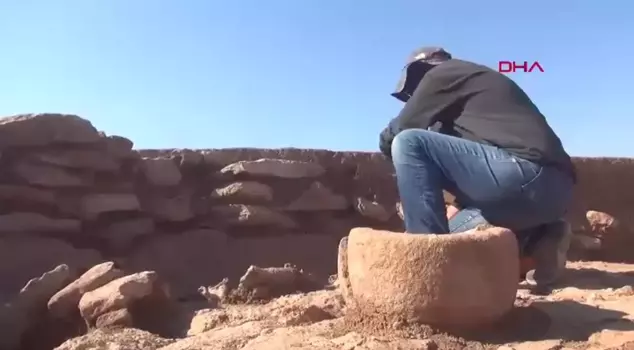
09.11.2024 21:30
In the excavation works carried out in Şanlıurfa, the remains of Çakmaktepe, which is estimated to have been built about 1000 years before the world's oldest temple complex Göbeklitepe, were discovered.
In Şanlıurfa, during the excavation works carried out within the 'Stone Hills' project, which includes Göbeklitepe, known as the 'zero point of history' with its 12,000-year history and added to the UNESCO World Heritage List in 2018, findings were discovered at Çakmaktepe, which is thought to be an older settlement than Göbeklitepe. The remains uncovered in the excavations, which have caused excitement in the archaeology world, were protected with nylon tarpaulins to prevent them from being affected by winter conditions.
"WE ESTIMATE IT IS 1000 YEARS OLDER THAN GÖBEKLİTEPE"
Assoc. Prof. Dr. Fatma Şahin, who is conducting the excavation works in the region, stated that they started excavations at Çakmaktepe in 2021, saying, "We began surface surveys in the region in 2012. Taking advantage of the pandemic period, we found the opportunity to conduct long-term research here. Our research took place in the area west of the Harran Plain, and we identified many previously unknown settlement areas. Most of these settlements belong to the pottery period and hunter-gatherer communities. One of these settlements was Çakmaktepe. We started excavation works in the same year. We can say that Çakmaktepe is the ancestor of Göbeklitepe and Karahantepe. Here, we found a large structure approximately 16 meters in diameter, carved into the main rock. Inside this structure, we identified burned animal heads that had been placed inside after being burned outside. Among these animal heads are species such as wild cattle, sheep, goats, equids, and gazelles. Carbon-14 testing has not yet been conducted, but based on the found chipped stone materials, we estimate that the settlement at Çakmaktepe dates back to 10,000 BC, meaning it is 500 to 1000 years older than Göbeklitepe," she said.
PRIVATE AND PUBLIC STRUCTURES
Assoc. Prof. Dr. Şahin noted that alongside structures that can be classified as 'housing' at Çakmaktepe, public structures have also been uncovered, stating, "The structures at Göbeklitepe are defined as temples. However, we refer to them here as 'private' or 'public structures.' In the excavations, we found a structure created by cutting the main rock, approximately 16 meters in diameter. This structure was buried when it was abandoned, just like at Göbeklitepe. Standing stones and wall stones were carefully placed aside. This situation indicates that structures were completely destroyed and left behind in the period before Göbeklitepe," she said.
Furthermore, after the excavation works, the remains were covered with nylon tarpaulins to prevent damage during the winter season.